Many purebred dogs like the Great Dane, the Boxer, the Doberman, and the Boston Terrier have cropped ears as part of their breed standard. However, this procedure is controversial among dog lovers. There are other dog breeds like the German Shepherd, the Rottweiler, the Bulldog, the Mastiff, and the Cane Corso that aren’t typically submitted to this banal procedure, but there are always exceptions to this rule.
No matter what some people might claim, cropping a dog’s ears is solely done for cosmetic purposes. It’s a barbaric and unnecessary procedure.
Furthermore, considering that the AKC allows all dogs to enter competitions natural and uncropped, even this aesthetic reason is an inadequate excuse to put your Cane Corso puppy through so much pain.
Sadly, ear cropping isn’t the only thing troubling Cane Corso lovers. There’s another problem called tail docking.
Tail docking is yet another notorious cosmetic procedure you see all the time with this dog breed, and it’s currently accepted as part of the Cane Corso breed standard, but we’ll talk about that later on.
In this article, we’ll discuss the pros and cons of ear cropping and tail docking, and whether you decide to submit your puppy to these procedures. Here’s a little hint: none of the reasons people usually give as an excuse are reasonable enough.
Both terms: Cropping and Docking, were invented to diminish the cruel association with the actual act of cutting off a part of a dog.
So, let’s take a look at both procedures, how and when they are done, and what the reasoning behind them might be.
Cane Corso Ear Cropping – What Is It?

The process of having a licensed veterinarian surgically shorten a dog’s outer ears, although controversial, is a fairly simple ‘cosmetic procedure’ where the floppy parts of a dog’s ears (a longer part of the cartilaginous tissue called the ‘Pinna’) are cut and then taped together or stitched for several weeks.
It’s a non-invasive procedure, unlike neutering for male dogs or spaying for female dogs.
If performed by a skilled veterinarian, the aftercare is very simple. Taping and splinting aren’t necessary… only salve or ointment is applied to the edge of the ear until the stitches come out on their own, which happens in about a week to a week and a half.
After the dog’s ears heal, they are able to stand upright on their own.
Ear cropping is usually performed under anesthesia when the dog is around 6 to 12 weeks of age. Since they are very young when the procedure is performed, they usually go right back to being themselves the very next day.
Ear Cropping For A Cane Corso – Is It Common To See?
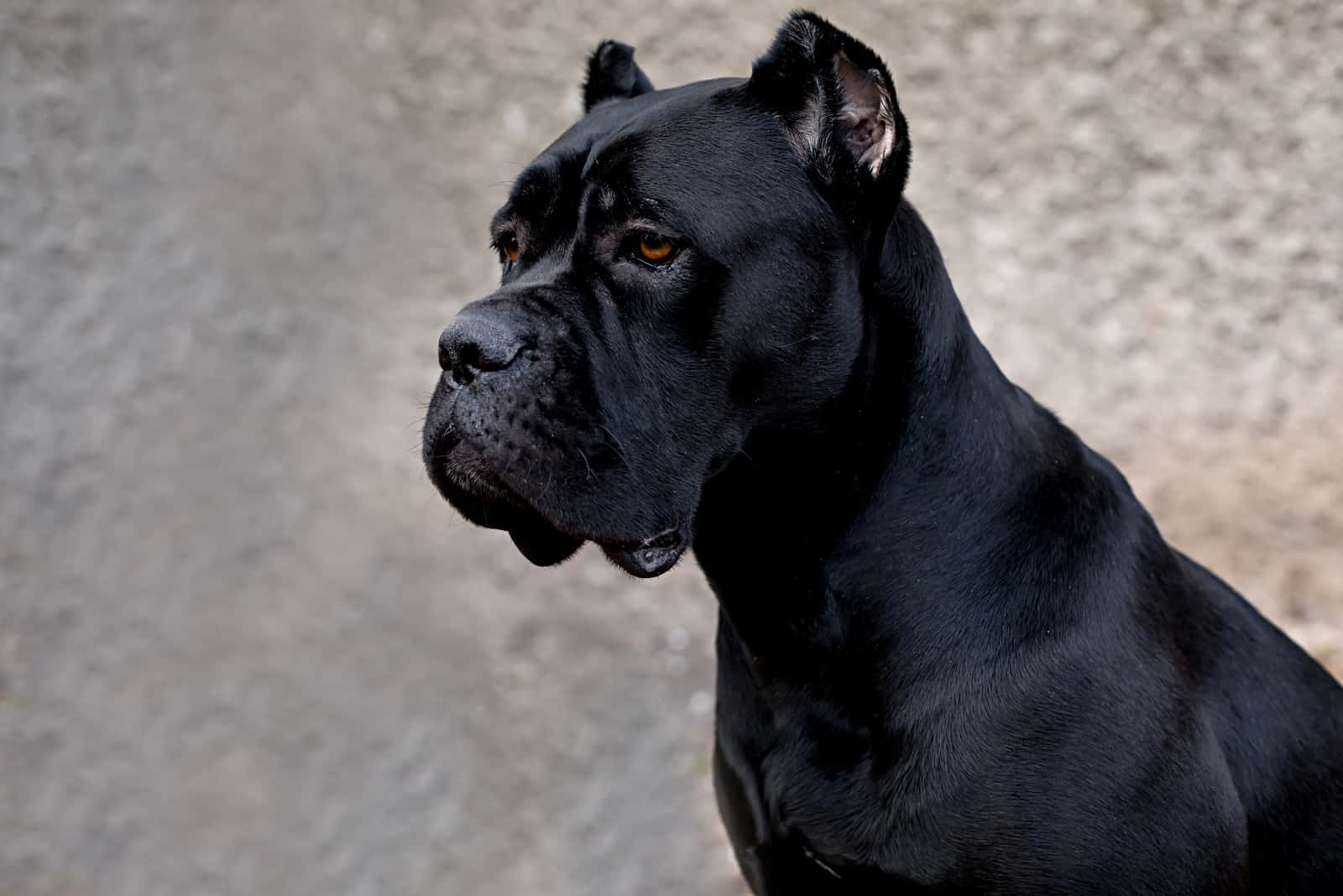
The Cane Corso is known to be a gentle giant toward those it loves. It is one of two distinct Italian Mastiff breeds that have descended from ancient Roman war dogs.
Historically, the Cane Corso dog’s bloodlines can be traced back to ancient times in Italy where it was bred to act as a guard dog, a war dog, and a skilled hunter for game of various sizes.
When translated from Italian, the name ‘Cane Corso’ literally means guard dog or protector dog.
Naturally, all dogs use their tail and ears for balance, communication, and tracking. Early on in their history, Cane Corso dogs were used as working dogs, so they needed their ears and tail intact to be able to do their jobs well.
So, no, it doesn’t make much sense to crop a Cane Corso puppy’s ears.
However, it is fairly common for Cane Corso owners to dock their puppy’s tail, so you will mostly encounter ones with short tails. The modern reason for this is convenience and maneuverability in household environments.
Predominantly, a Cane Corso’s tail was docked to prevent damage to its tail while working, or in certain situations, to stop intruders from being able to grab its tail and gain an advantage.
So, Why Do Some People Still Choose To Crop A Cane Corso’s Ears?
Cutting dog’s nails is quite common and understandable, as long as you know can you walk your dog afterwards. But what about ear cropping?
There are a few justifiable reasons why you would want to crop your Cane Corso’s ears.
Here are some points of reference for advocates of both sides of the problem to consider.
Arguments For Ear Cropping
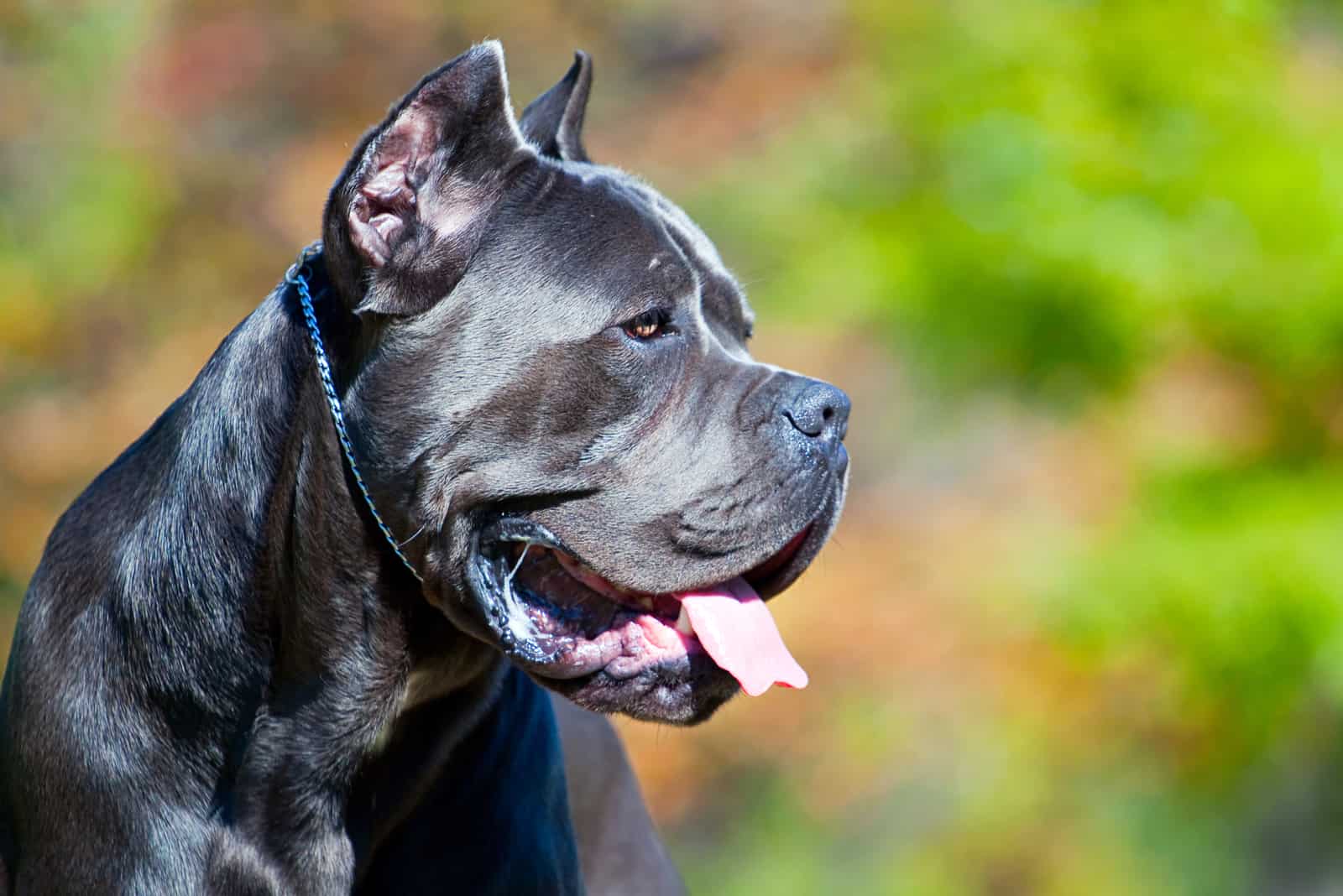
1. The Look.
It has long been a foundational characteristic of Cane Corso breed tradition to crop their ears ever since they originated back in ancient Italy.
Today, one of the main reasons why dog lovers choose to snip their Corso’s ears or tail is for cosmetic reasons to make them appear more threatening.
There is a certain air of authority about a dog with upright ears that makes you think twice about approaching it. This is the most appealing aspect of having a dog with cropped ears… it always looks like it’s ready for a fight.
2. Better Hearing.
Some people subject their Cane Corso dogs to ear cropping because they believe the procedure allows the dog to hear better.
These people believe that in nature, there is no such thing as a dog with floppy ears that cover the ear canal from air and light, unlike the many man-made breeds of dogs created over time through cross-breeding.
They presume that ear cropping re-establishes a naturally functional erect ear.
However, this has not been proven to be a fact, and it stands to reason that they are able to hear well enough without cropping.
3. Preventing Ear Infections And Injuries.
Some people claim that having a Cane Corso dog’s ears cropped will prevent injuries.
They also claim that it’ll significantly reduce the risk of the puppy developing ear infections that arise from bites by ticks or mites, or bacteria that thrive in dark and moist environments like the inner ear canal.
Usually, ear wounds are not life-threatening to a dog. They can easily be stitched up, and ear infections can be kept in check with antibiotic treatments.
However, ear wounds can potentially leave a scar, even if the stitching is done correctly by a licensed vet. Blood flow through the ear can become weakened, resulting in improper healing and partial loss of the ear.
Chronic ear infections can be persistent, recurring, and very painful for the dog, leading to potentially permanent hearing loss.
Some believe that eliminating floppy ears that cover the ear canal results in having a happy and healthy dog that will not be prone to injuries and infections, but others have found the opposite to be true.
Leaving the dog’s ear open to any insect that might end up crawling into the ear canal can also lead to infections.
However, if the dog is not subjected to dog fights, or has an overall peaceful home life, all of this can be avoided with proper routine care and hygiene.
Arguments Against Ear Cropping

1. Profuse Bleeding During The Procedure.
The blood supply for a dog’s ear flaps comes from the branches of the superficial carotid artery.
The tissue itself is densely packed with hundreds of tiny blood vessels that can bleed for an extended period during and after the procedure.
2. Tremendous Pain.
Although the puppy is put to sleep by using anesthetics before the procedure is performed, when the anesthetics wear off, your Cane Corso puppy may deal with some lingering pain.
There is usually no way to tell for sure how extensive the pain really is, and it remains to be debated whether or not this is the case.
3. Potential Loss Of Trust.
There is a small chance that the dog might develop a fear of the vet or become distrustful towards anyone who was involved in the process.
This is usually not the case when ear cropping is done on young puppies, but it may be a factor to consider if you have a grown dog that you want to have cropped. But, that could very well depend on the dog’s natural character and affinity towards people.
4. It’s A Waste Of Money.
The approximate cost of cropping your dog’s ears ranges from 200 to 600 dollars.
The average cost of dog food in the United States is between 20 and 60 dollars. That amounts to between 250 and 700 dollars per year.
Not to be the one to tell breeders how to use their resources, but I believe most people will agree that what you pay for and what you get in this scenario is a bad financial move.
So, the logical conclusion would be to use those funds for nearly a year’s worth of dog food!
Cane Corso Ear Cropping In Adulthood
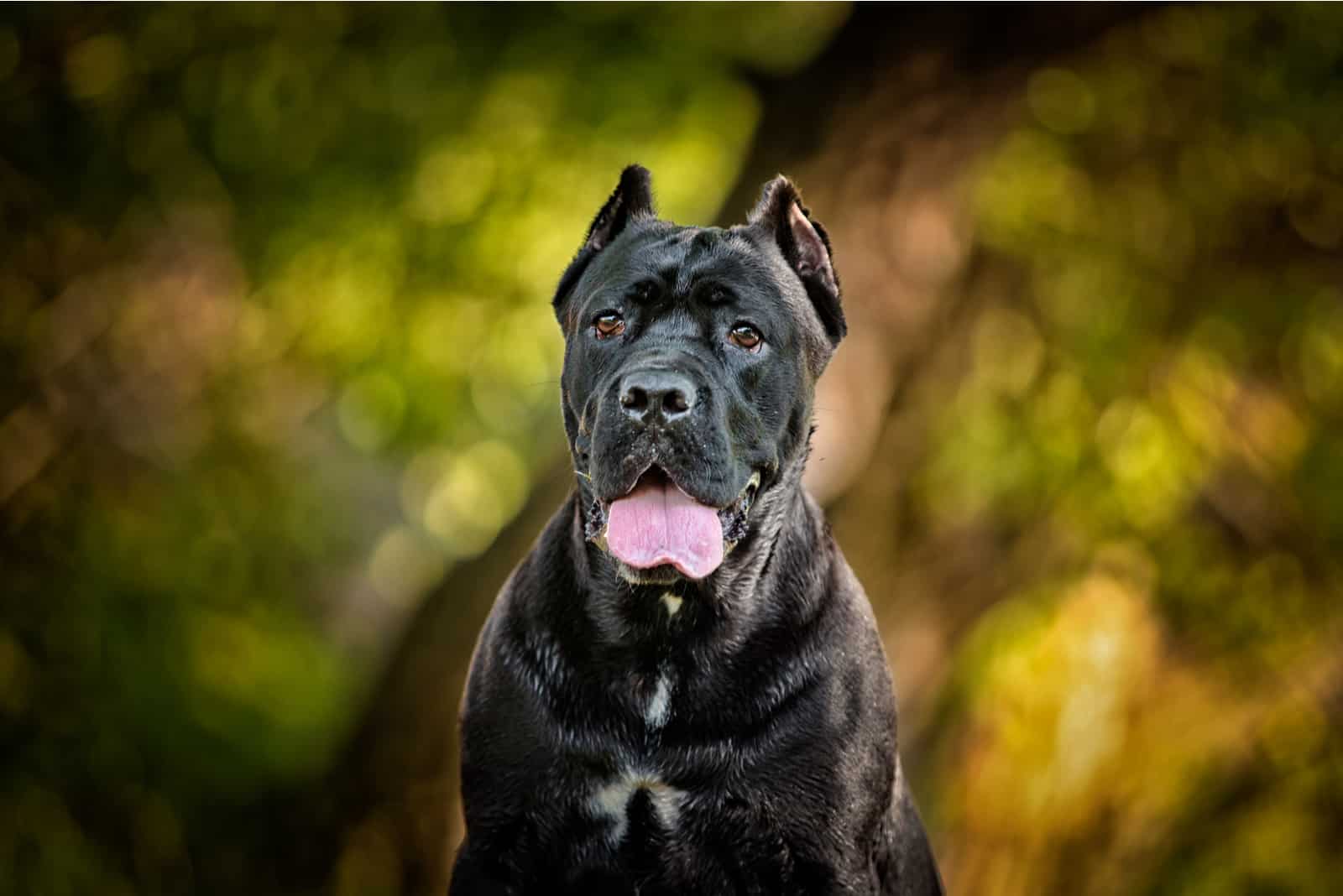
Usually, a dog’s ears are cropped between seven and twelve weeks of age. Some people assume the ears won’t stand up if the procedure is not performed at a young age.
If you already own a fully-grown Cane Corso dog and you’re considering whether or not it’s feasible to have its ears cropped, it’s not entirely impossible.
The fact remains that some veterinarians will agree to perform an ear crop on grown dogs, while others won’t do it after they reach a certain age.
It’s just a matter of finding the right person willing to do the job.
What age your dog is doesn’t seem to be the crucial aspect when it comes to ear cropping.
If your Cane Corso is six months old and you abruptly decide you want to have its ears cropped, you will certainly be able to find someone willing to perform the procedure.
Cane Corso Ear Cropping Styles
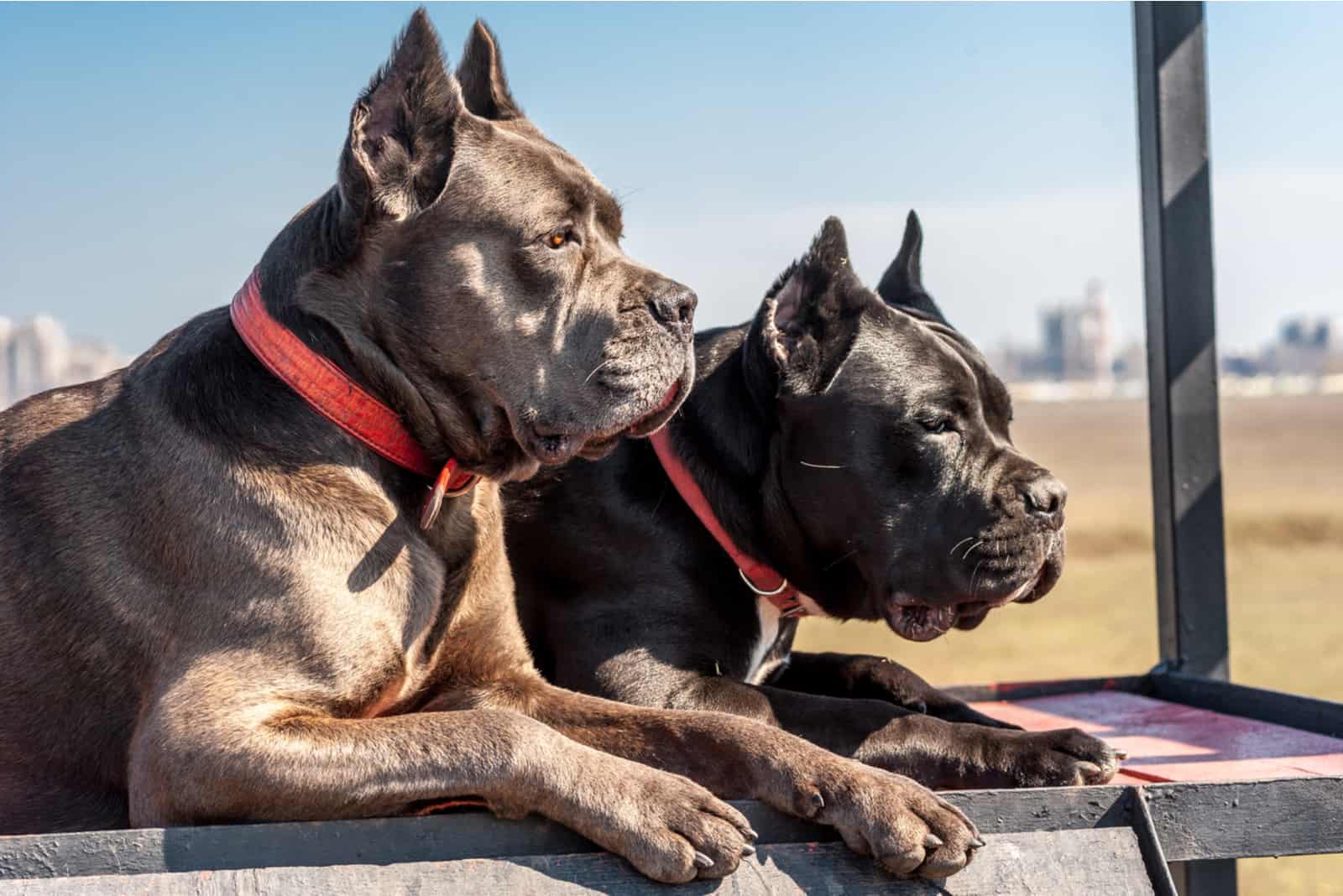
There are four main types of ear crops that are popular with Cane Corso dog lovers today:
The Long Crop – This is the longest possible cropping style. It requires taping support to heal in a vertical position since it has more weight to it.
• The Show Crop – This cropping style is just a little shorter than the long crop. The ears are more likely to stand erect on their own after healing, so no support is needed with this style.
• The Battle Crop – This style is the shortest available style by removing the most material. It leaves practically nothing to grab on to. Cane Corso dogs with battle cropped ears appear more threatening; therefore, this particular cropping style is the most popular of them all.
• The Short Crop – This style is also popular with some Cane Corso owners, with the length of the ears being just between the show crop and the battle crop.
Cane Corso Ear Hygiene And Health
In general, grooming your Cane Corso dog takes some effort!
They are known to be very active, and they dislike being groomed. This is why you must form the habit early on when they are puppies. Acustom your dog from an early age to grooming or else you’ll have a hard time cleaning its ears when it reaches adulthood.
It’s best to clean their ears with ear-cleaning solutions when giving them a bath, and you should give your Cane Corso a good scrub approximately every four to seven weeks.
If your pup still tries to squirm away during a bath, try having a treat handy to reward it for sitting still and being patient.
Eventually, you will get the chance to pour the ear-cleaning solution into your dog’s ear. The solution should entirely fill up the ear canal. Afterward, softly massage your dog’s ear for about thirty seconds, and then let it shake its head to get rid of any excess fluid. Then, you can wipe the ears clean with a clean cloth.
How To Care For A Cane Corso Puppy With Cropped Ears
In case you’ve got a Cane Corso whose ears have already been cropped, there are some things you should know. There are some people who will crop a dog’s ears unprofessionally, which, in turn, causes more trouble.
Assuming you’re not one of those people who wants to crop a dog’s ears themselves, you should let a professional do it to make the entire process easier for the dog.
If you receive a puppy with cropped ears, try and find out who was responsible for the procedure. Was it done by a licensed veterinarian? Or, a so-called professional in their backyard?
It’s very important to know why it matters most to find responsible breeders.
We recommend that you find a reputable breeder with high-quality, transparent breeding practices to ensure that you get a healthy puppy. You should also get to know the breeder well enough prior to deciding to purchase your new Cane Corso puppy.
It’s more important for breeders to conduct health tests and provide health certifications rather than perform ear cropping or tail docking.
Responsible breeders that care about their dogs will most likely be against these procedures, and they won’t advise you or anyone else to perform them!
Why Do Some Other Breeds Of Dogs Have Their Ears Cropped?
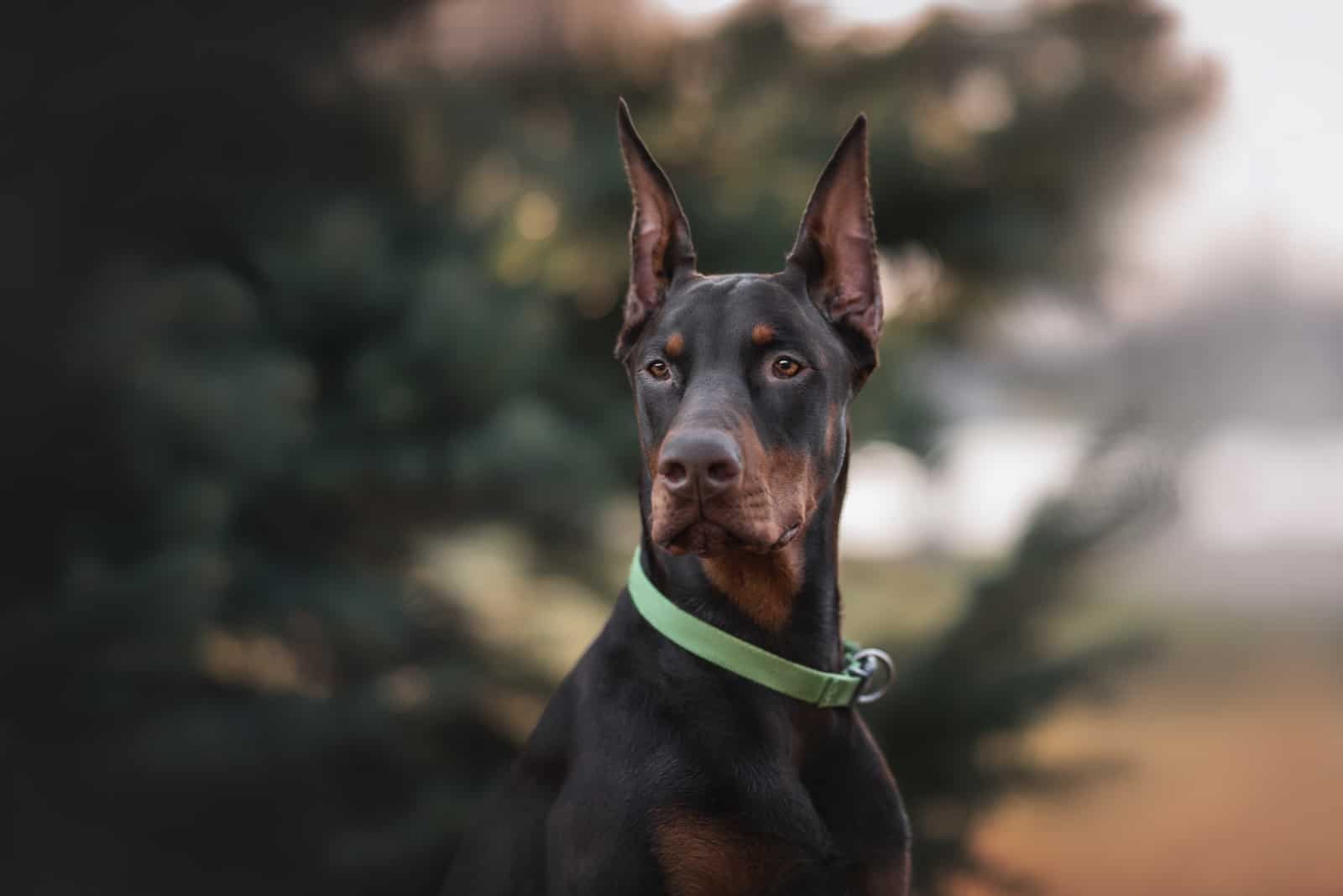
Certain dog breeds are often kept with cropped ears. This seems to be the present breed standard for these dogs.
These include breeds like:
• Doberman Pinschers
• Pit Bull Terriers
• Great Danes
• Bulldogs
• Boxers
• Mastiffs
• Schnauzers
Other breeds, like German Shepherds and Corgis, for example, have natural ears raised into adulthood, so there is no need for cropping. It’s rare for other breeds like Spaniels and Poodles to have cropped ears, although some dog owners have their cosmetic reasons for doing so.
Historically, the reason why most of the dogs with naturally uncropped ears were subjected to cropping or docking is that they were often used in dogfighting. These were popular dog fighting breeds, like the Bull Terrier or the American Pit Bull.
Their ears and tails would be shortened to eliminate any perceived points of weakness, and also to prevent injuries since a dog’s ears are one of the weak points of a dog and tend to bleed profusely when wounded.
Though legal in Japan and parts of Russia, today, in most countries of the world, dogfighting is illegal, so the prevalence of ear cropping and tail docking, in general, has been on the decline.
However, it remains popular, whether legal or not, in certain parts of Eastern Europe, Latin America, the United Kingdom, and the United States.
Cane Corso Tail Docking – What Is It?
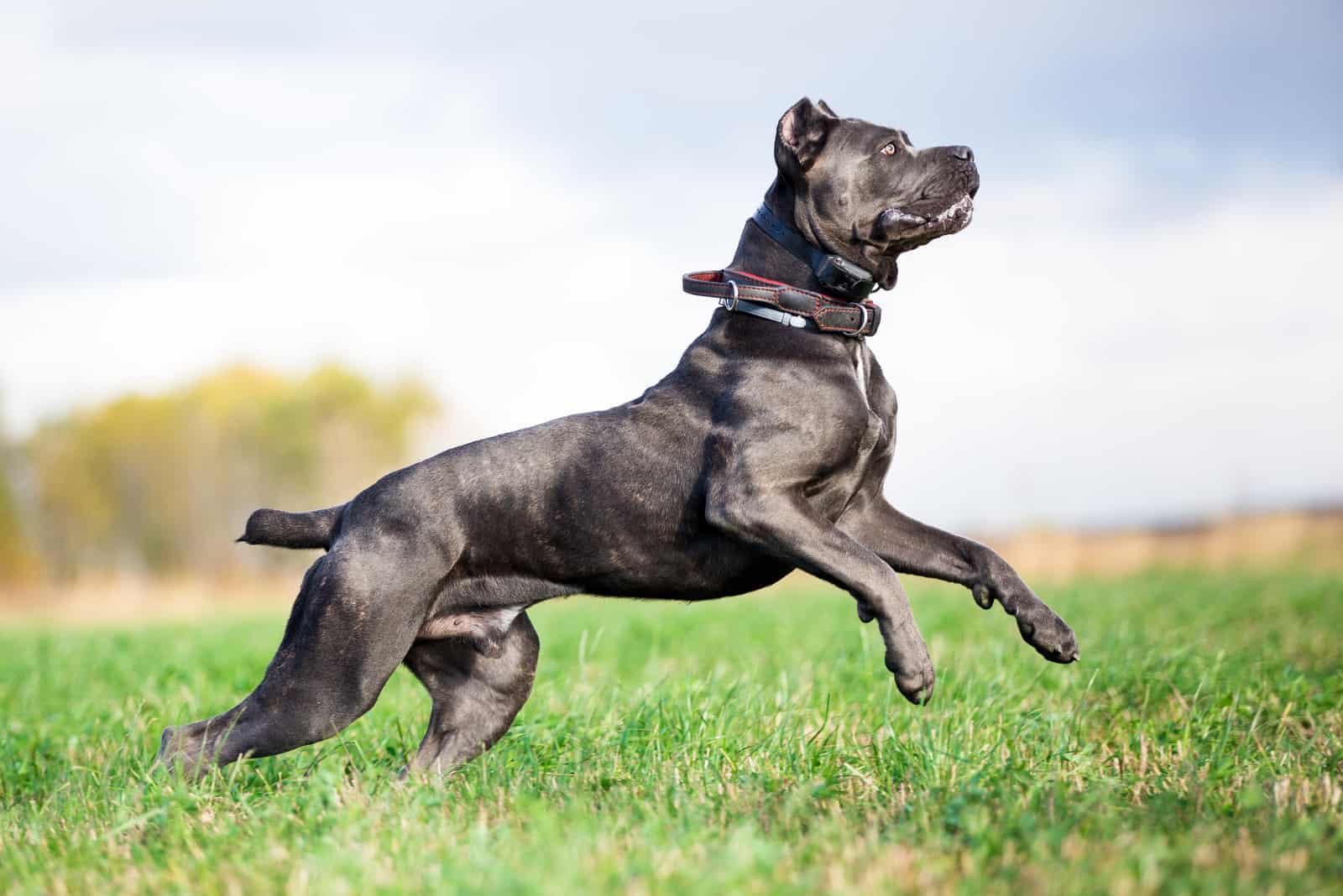
The practice of having a part of a Cane Corso dog’s tail cut is called ‘Docking’. This is usually performed when the puppies are merely a couple of days old and their tails are still ‘squishy’.
Tail docking is done without anesthetics; the reason behind it being that the dogs are so young that they won’t even remember it.
Nowadays, more than fifty different dog breeds have their tail docked.
There are a lot of people who still support these practices, yet there are many more of those who stand to reason that they are cruel and serve no particular purpose except giving a dog a more threatening appearance. Even the AVMA (the American Veterinary Medical Association) stresses the importance of the cessation of ear cropping in all breed standards.
Additionally, the AKC (American Kennel Club) states that all dog breeds entered into shows are eligible to win whether their ears and tail are cut or not.
In the past decade, there have been tons of heated debates over the practice of ear cropping in dogs in general, but especially with breeds, such as the Cane Corso, since they have traditionally been subjected to these practices. The question remains: should the method still be going on today?
What Does A Dog Even Use Its Tail For?
What are some fun facts to know about the purpose of a dog’s tail, you ask?
Generally speaking, a dog’s tail is used for balance during movement, as well as for communication with other dogs and we humans.
But, different dog breeds have evolved different types of tails, and they always play a crucial role in a dog’s life.
Dog breeds that possess longer fur and longer tails are known to use their tails as a layer of protection against cold weather, wrapping them around their snouts. These are breeds like the Siberian Husky or the American Malamute.
Other breeds, such as Golden Retrievers and Labrador Retrievers, have, over time, evolved a thick, furry tail to help them swim better.
Are Ear Cropping And Tail Docking Primitive Practices?
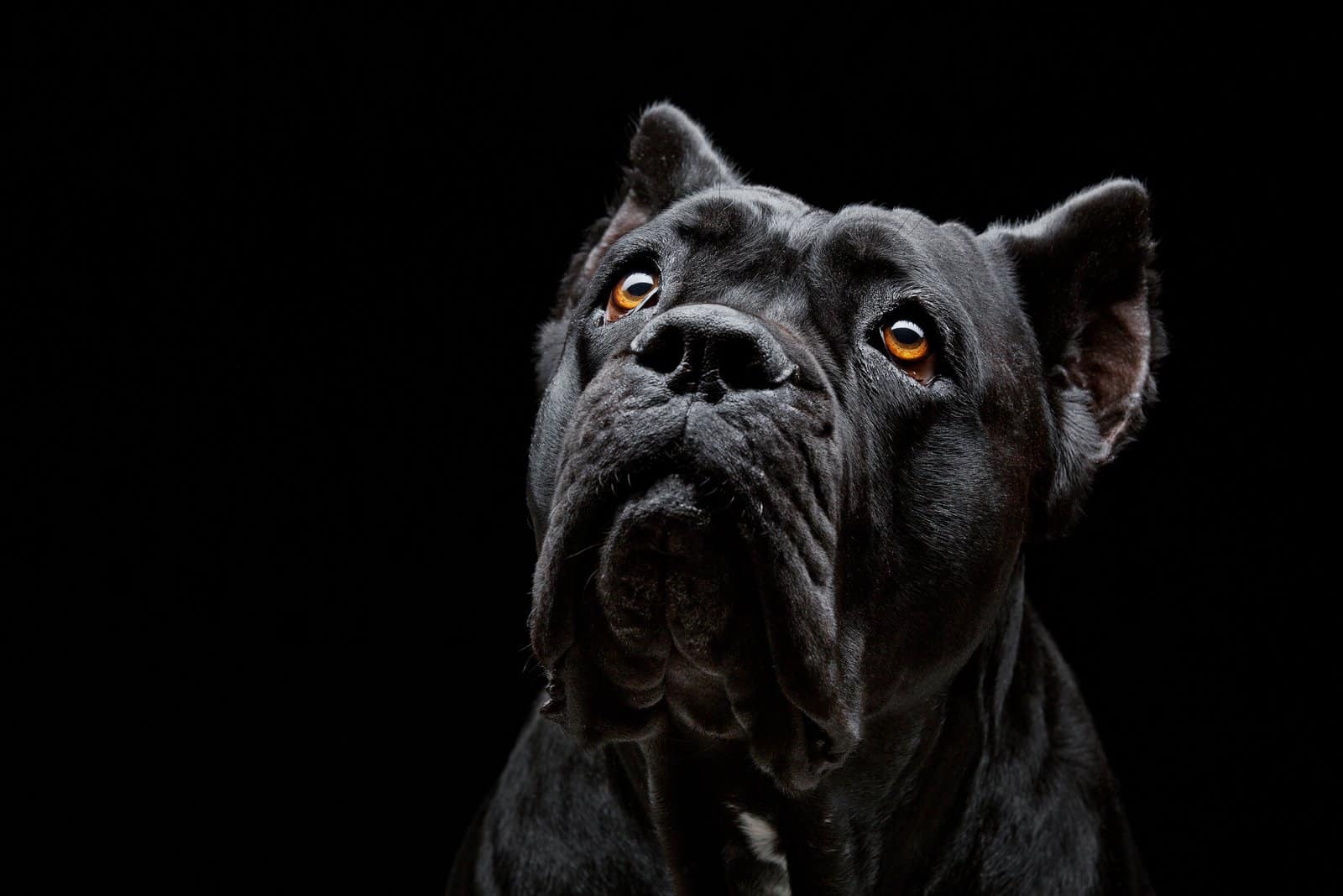
The practice of cutting off the ears and the tail of dogs, in general, has been banned in most European countries, including all countries that have signed the European Convention for the Protection of Pet Animals.
It is also illegal in Australia, regions of Spain, and some parts of Canada.
However, contrary to many other countries, the U.S. government has not yet officially passed any law that will regulate the practice of cropping and docking. Some states like New York, Pennsylvania, and Connecticut have already placed regulations on this practice.
Today, ear cropping and tail docking are mostly considered to be unethical, primitive, and cruel practices towards dogs since neither method can be considered completely painless for the dog.
Why not just go with the flow of things and let nature take its course?
Final Thoughts
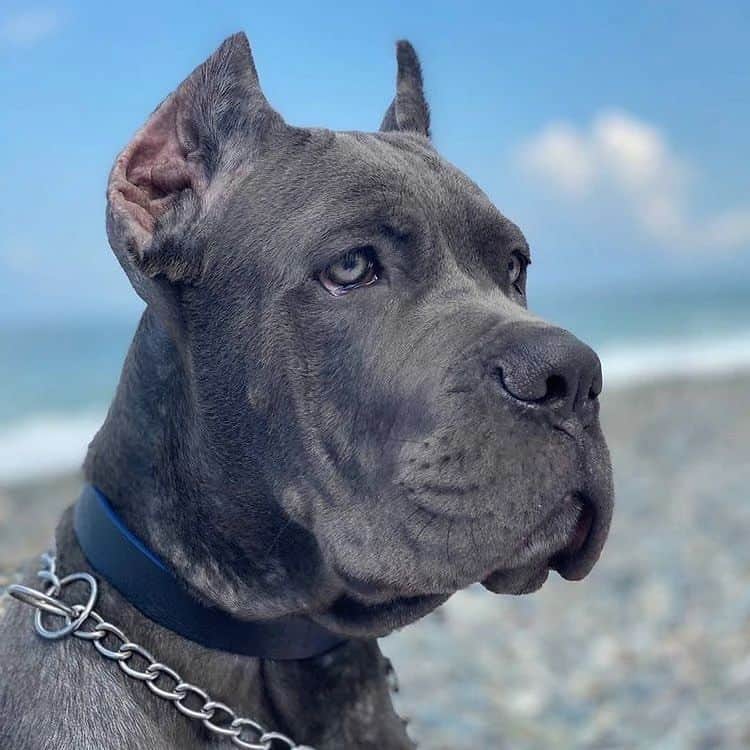
Photo from: @canecorso_union
No matter which way you look at it, besides the fact that it’s painful and completely unnecessary, there is no valid evidence to support that ear cropping is beneficial to Cane Corso dogs in any way, shape, or form, except for the aesthetic value it brings to make it look more menacing.
That being, of course, if the Corso is not being subjected to dogfighting.
A Cane Corso dog naturally has pointy ears through genetic breeding over the years since it originated back in Italy. They have become less pointy and more floppy.
Is a dog with a mighty stature such as the Cane Corso not intimidating enough without having to crop its ears or dock its tail? Why not embrace the fact that they now have more tender and friendlier appearances.
So, to recap and give the final answer to the question: ‘To Cut or not to cut?’
The prevalent answer is no.
Related articles:
Cane Corso Ear Cropping















